Fishes
Media
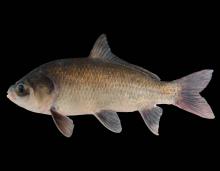
Species Types
Scientific Name
Ictiobus cyprinellus
Description
Missouri's largest sucker, the bigmouth buffalo occurs over much of the state and is most abundant in the Missouri River and its larger tributaries to the north.
Media

Species Types
Scientific Name
Cyprinus carpio
Description
The common carp is a "whopper" member of the minnow family. Originally from Asia, it was actively stocked in America in the 1800s and was firmly established in Missouri by 1895.
Media
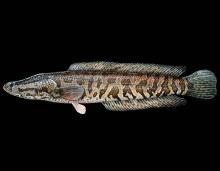
Species Types
Scientific Name
Channa argus and other Channa and Parachanna spp.
Description
Snakeheads are native to Asia and invasive in America. They resemble bowfins and can live in similar habitats. Note the extended anal fin and the pelvic fins located close to the pectoral fins and gills.
Media

Species Types
Scientific Name
Pomoxis annularis
Description
The white crappie, a popular panfish, has silver sides with 5 to 10 often faint vertical bars. The upper jaw reaches past the middle of the eye. It is more abundant and widespread than the black crappie.
Media
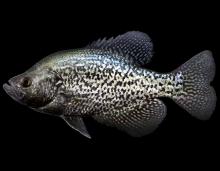
Species Types
Scientific Name
Pomoxis nigromaculatus
Description
The black crappie is a popular panfish. It is deep bodied and slab sided. The sides are silver with an irregular pattern of dark speckles. The upper jaw is long, reaching past the middle of the eye.
Media

Species Types
Scientific Name
Lepisosteus osseus
Description
The longnose gar has a longer, narrower snout than our other three gars and is the most widely distributed gar in Missouri.
Media

Species Types
Scientific Name
Sander vitreus
Description
MDC has been stocking walleye, a popular game fish, in lakes and reservoirs including Stockton, Lake of the Ozarks, Bull Shoals, and numerous other reservoirs.
Media
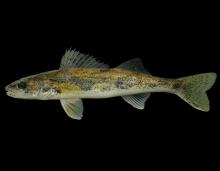
Species Types
Scientific Name
Sander canadensis
Description
The sauger is closely related to the walleye. In Missouri, it's found mostly in the Mississippi and Missouri rivers and suitable tributaries, plus the Eleven Point River. It prefers flowing water and often swift current.
Media
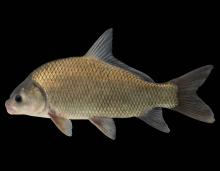
Species Types
Scientific Name
Ictiobus bulbalus
Description
The smallmouth buffalo is nearly as common and widespread in Missouri as the bigmouth buffalo. Identify it by its small, nearly horizontal mouth and the strongly keeled forward part of its back.
Media
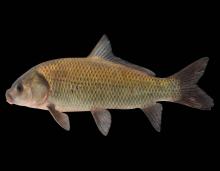
Species Types
Scientific Name
Ictiobus niger
Description
Compared to Missouri’s other buffalofishes, the black buffalo is less abundant and widespread, and of the three, it occurs most often in places with strong currents.
See Also


Media

Species Types
Scientific Name
Amphiuma tridactylum
Description
The three-toed amphiuma is an eel-like, completely aquatic salamander. It has very small forelimbs and hind limbs, each with three tiny toes. In Missouri it’s found only in the Bootheel region.
Media

Species Types
Scientific Name
Siren intermedia nettingi
Description
The western lesser siren is an eel-like, aquatic salamander with external gills, small eyes, small forelimbs with four toes, and no hind limbs. In Missouri, it’s found mostly in the Bootheel and northward in counties near the Mississippi River.
About Fishes in Missouri
Missouri has more than 200 kinds of fish, more than are found in most neighboring states. Fishes live in water, breathe with gills, and have fins instead of legs. Most are covered with scales. Most fish in Missouri “look” like fish and could never be confused with anything else. True, lampreys and eels have snakelike bodies — but they also have fins and smooth, slimy skin, which snakes do not.





















